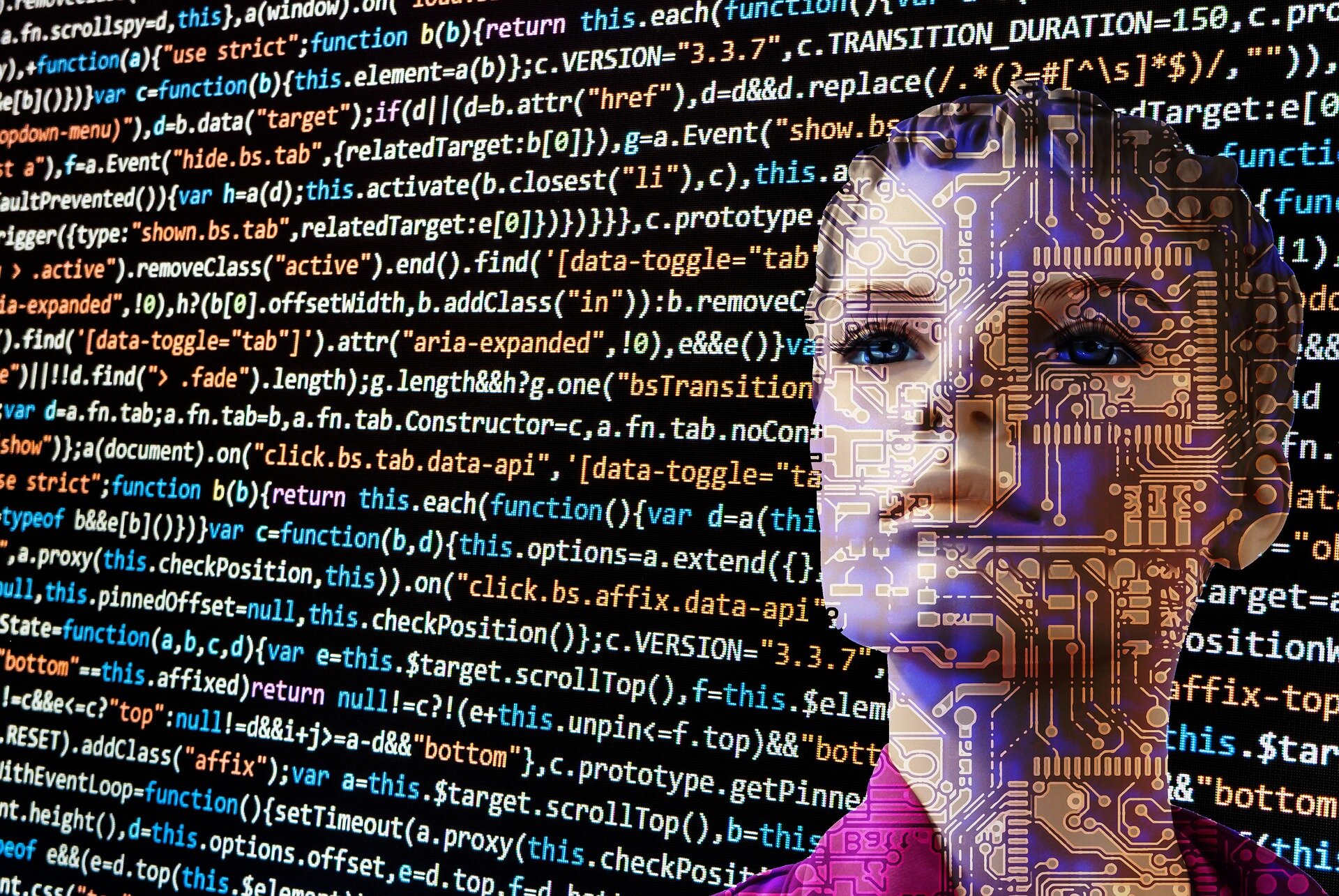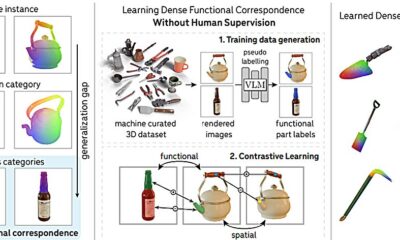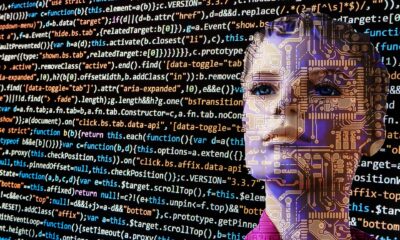Tech
Meta and TikTok to obey Australia under-16 social media ban

Tech giants Meta and TikTok said Tuesday they will obey Australia’s under-16 social media ban but warned the landmark laws could prove difficult to enforce.
Australia will from December 10 force social media platforms such as Facebook, Instagram and TikTok to remove users under the age of 16.
There is keen interest in whether Australia’s sweeping restrictions can work, as regulators around the globe wrestle with the dangers of social media.
Both TikTok and Meta—the parent company of Facebook and Instagram—said the ban would be hard to police, but agreed they would abide by it.
“Put simply, TikTok will comply with the law and meet our legislative obligations,” the firm’s Australia policy lead Ella Woods-Joyce told a Senate hearing on Tuesday.
On paper, the ban is one of the strictest in the world.
But with just over a month until it comes into effect, Australia is scrambling to fill in key questions around enforcement and firms’ obligations.
TikTok warned the “blunt” age ban could have a raft of unintended consequences.
“Experts believe a ban will push younger people into darker corners of the Internet where protections don’t exist,” said Woods-Joyce.
‘Vague’ and ‘rushed’
Meta policy director Mia Garlick said the firm was still solving “numerous challenges”.
It would work to remove hundreds of thousands of users under 16 by the December 10 deadline, she told the hearing.
But identifying and removing those accounts still posed “significant new engineering and age assurance challenges,” she said.
“The goal from our perspective, being compliance with the law, would be to remove those under 16.”
Officials have previously said social media companies will not be required to verify the ages of all users—but must take “reasonable steps” to detect and deactivate underage ones.
Companies found to be flouting the laws face fines of up to Aus$49.5 million (US$32 million).
Tech companies have been united in their criticisms of Australia’s ban, which has been described as “vague,” “problematic,” and “rushed.”
Video streaming site YouTube—which falls under the ban—said this month that Australia’s efforts were well intentioned but poorly thought through.
“The legislation will not only be extremely difficult to enforce, it also does not fulfill its promise of making kids safer online,” local spokeswoman Rachel Lord said.
Australia’s online watchdog recently suggested that messaging service WhatsApp, streaming platform Twitch and gaming site Roblox could also be covered by the ban.
© 2025 AFP
Citation:
Meta and TikTok to obey Australia under-16 social media ban (2025, October 28)
retrieved 28 October 2025
from https://techxplore.com/news/2025-10-meta-tiktok-obey-australia-social.html
This document is subject to copyright. Apart from any fair dealing for the purpose of private study or research, no
part may be reproduced without the written permission. The content is provided for information purposes only.
Tech
AI chatbots are becoming everyday tools for mundane tasks, use data shows

Artificial intelligence is fast becoming “part of the furniture.” A decade after IBM’s Watson triumphed on “Jeopardy!,” generative AI models are in kitchens and home offices. People often talk about AI in science fiction terms, yet the most consequential change in 2025 may be its banal ubiquity.
To appreciate how ordinary AI use has become, it helps to remember that this trend didn’t start with generative chatbots. A 2017 Knowledge at Wharton newsletter documented how deep learning algorithms were already powering chatbots on social media and photo apps’ facial recognition functions. Digital assistants such as Siri and Alexa were performing everyday tasks, and AI-powered image generators could create images that fooled 40% of viewers.
When ChatGPT became publicly available on Nov. 30, 2022, the shift felt sudden, but it was built on years of incremental integration. AI’s presence is now so mundane that people consult chatbots for recipes, use them as study partners and rely on them for administrative chores.
As a writer and professor who studies ways that generative AI can be an everyday collaborator, I find that recent usage reports show how AI has been woven into everyday life. (Full disclosure: I am a member of OpenAI’s Educator Council, an uncompensated group of higher education faculty who provide feedback to OpenAI on educational use cases.)
Who’s using ChatGPT and why?
Economists at OpenAI and Harvard analyzed 1.5 million ChatGPT conversations from November 2022 through July 2025. Their findings show that adoption has broadened beyond early users: It’s being used all over the world, among all types of people. Adoption has grown fastest in low- and middle-income countries, and growth rates in the lowest-income countries are now more than four times those in the richest nations.
Most interactions revolve around mundane activities. Three-quarters of conversations involve practical guidance, information seeking and writing. These categories are for activities such as getting advice on how to cook an unusual type of food, where to find the nearest pharmacy, and getting feedback on email drafts. More than 70% of ChatGPT use is for nonwork tasks, demonstrating AI’s role in people’s personal lives. The economists found that 73% of messages were not related to work as of June 2025, up from 53% in June 2024.
Claude and the geography of adoption
Anthropic’s economic index paints a similar picture of uneven AI adoption. Researchers at the company tracked users’ conversations with the company’s Claude AI chatbot relative to the working-age population. The data shows sharp contrasts between nations. Singapore’s per-capita use is 4.6 times higher than expected based on its population size, and Canada’s is 2.9 times higher. India and Nigeria, meanwhile, use Claude at only a quarter of predicted levels.
In the United States, use reflects local economies, with activity tied to regional strengths: tech in California, finance in Florida and documentation in D.C. In lower-use countries, more than half of Claude’s activity involves programming. In higher-use countries, people apply it across education, science and business. High-use countries favor humans working iteratively with AI, such as refining text, while low-use countries rely more on delegating full tasks, such as finding information.
It’s important to note that OpenAI reports between 400 million and 700 million weekly active users in 2025, while third-party analytics estimate Claude at roughly 30 million monthly active users during a similar time period. For comparison, Gemini had approximately 350 million monthly active users and Microsoft reported in July 2025 more than 100 million monthly active users for its Copilot apps. Perplexity’s CEO reported in an interview that the company’s language AI has a “user base of over 30 million active users.”
While these metrics are from a similar time period, mid-2025, it’s important to note the differences in reporting and metrics, particularly weekly versus monthly active users. By any measure, though, ChatGPT’s user base is by far the largest, making it a commonly used generative AI tool for everyday tasks.
Everyday tool
So, what do mundane uses of AI look like at home? Consider these scenarios:
- Meal planning and recipes: A parent asks ChatGPT for vegan meal ideas that use leftover kale and mushrooms, saving time and reducing waste.
- Personal finance: ChatGPT drafts a budget, suggests savings strategies or explains the fine print of a credit card offer, translating legalese into plain language.
- Writing support: Neurodivergent writers use ChatGPT to organize ideas and scaffold drafts. A writer with ADHD can upload notes and ask the model to group them into themes, then expand each into a paragraph while keeping the writer’s tone and reasoning. This helps reduce cognitive overload and supports focus, while the writer retains their own voice.
These scenarios illustrate that AI can help with mundane decisions, act as a sounding board and support creativity. The help with mundane tasks can be a big lift: By handling routine planning and information retrieval, AI frees people to focus on empathy, judgment and reflection.
From extraordinary to ordinary tool
AI has transitioned from a futuristic curiosity to an everyday co-pilot, with voice assistants and generative models helping people write, cook and plan.
Inviting AI to our kitchen tables not as a mysterious oracle but as a helpful assistant means cultivating AI literacy and learning prompting techniques. It means recognizing AI’s strengths, mitigating its risks and shaping a future where intelligence—human and artificial—works for everyone.
This article is republished from The Conversation under a Creative Commons license. Read the original article.![]()
Citation:
AI chatbots are becoming everyday tools for mundane tasks, use data shows (2025, October 28)
retrieved 28 October 2025
from https://techxplore.com/news/2025-10-ai-chatbots-everyday-tools-mundane.html
This document is subject to copyright. Apart from any fair dealing for the purpose of private study or research, no
part may be reproduced without the written permission. The content is provided for information purposes only.
Tech
How digital technologies can support a circular economy

The role of digital technologies, such as IoT, 3D printing, and digital platforms, holds significant potential for supporting a circular economy. However, digital technologies are not a magic fix that can instantly change how physical resources are used and produced to prevent waste and promote a circular economy.
In her doctoral thesis, Ida Eyi Heathcote-Fumador explores digitally mediated circular practices within ecosystems to understand the human–material interactions involved in enabling a digitally mediated circular economy. Heathcote-Fumador will defend the thesis on November 5.
Circular economy focuses on managing the use and creation of physical resources, products, residual materials, and by-products to prevent them from ending up in landfills as waste, while ensuring that organic materials safely return to the environment.
What challenges do you focus on in your research?
Material resources and their sustainable management are central to the circular economy, while digital technologies are often seen as more intangible, flexible, and having multiple functions. When examining the role of digital technologies, we often overlook the material characteristics that shape these technologies, as well as the human activities involved in ensuring that technological and material configurations align with the principles of sustainable material management.
How do you address the problem?
I studied two ecosystems, or groups of organizations working together: one in Ghana, Africa, and the other in Europe, specifically Sweden and Portugal. Both focused on using digital technologies to support the sustainable recovery of waste from the environment.
Through interviews, observations, and document analysis, I examined how physical materials, digital technologies, and human activities influence each other to create digitally mediated circular practices. I used a human-material tuning approach to understand the mutual roles of materials, digital technologies, and human actions in establishing circular practices.
What are the main findings?
I developed a model showing that the circular principles of resource care are central to activities leading to the emergence of digitally mediated circular practices. Human actions involve the collective imagination of sustainable futures for production and consumption, the prospecting of suitable materials and digital technologies, and their shaping to realize these visions. This shaping process, referred to as tuning—a term first introduced by Andrew Pickering (1993)—is akin to adjusting a radio to obtain a preferred signal.
For instance, the organizations I studied shared a strong commitment to reducing environmental waste by converting it into new products with the help of digital technologies. They identified discarded materials such as fishing nets and selected technologies like 3D printing to transform these wastes into new products.
However, because 3D printers are typically optimized for virgin materials, the process requires extensive experimentation to adapt the technology to recycled inputs. This perseverance, driven by care for both the material and the environment, enabled the successful realization of digitally mediated circular practices.
What do you hope your research will lead to?
My research aims to encourage both scholars and practitioners to consider the material and human activities of the circular economy when examining how digital technologies enable it. Circularity is based on specific principles, with materials at its center. Recognizing and documenting their influence can enhance our overall understanding of how material, digital, and human components interconnect, shaping digitally mediated circular practices. This comprehensive recognition will result in solutions that effectively promote a circular economy.
More information:
Digitally Mediated Circular Economy Practices in Ecosystems : A Human-Material Tuning Practice Perspective. research.chalmers.se/en/publication/548860
Citation:
How digital technologies can support a circular economy (2025, October 28)
retrieved 28 October 2025
from https://techxplore.com/news/2025-10-digital-technologies-circular-economy.html
This document is subject to copyright. Apart from any fair dealing for the purpose of private study or research, no
part may be reproduced without the written permission. The content is provided for information purposes only.
Tech
OpenAI says a million ChatGPT users talk about suicide

Data from ChatGPT-maker OpenAI suggest that more than a million of the people using its generative AI chatbot have shown interest in suicide.
In a blog post published on Monday, the AI company estimated that approximately 0.15% of users have “conversations that include explicit indicators of potential suicidal planning or intent.”
With OpenAI reporting more than 800 million people use ChatGPT every week, this translates to about 1.2 million people.
The company also estimates that approximately 0.07% of active weekly users show possible signs of mental health emergencies related to psychosis or mania—meaning slightly fewer than 600,000 people.
The issue came to the fore after California teenager Adam Raine died by suicide earlier this year. His parents filed a lawsuit claiming ChatGPT provided him with specific advice on how to kill himself.
OpenAI has since increased parental controls for ChatGPT and introduced other guardrails, including expanded access to crisis hotlines, automatic rerouting of sensitive conversations to safer models, and gentle reminders for users to take breaks during extended sessions.
OpenAI said it has also updated its ChatGPT chatbot to better recognize and respond to users experiencing mental health emergencies, and is working with more than 170 mental health professionals to significantly reduce problematic responses.
© 2025 AFP
Citation:
OpenAI says a million ChatGPT users talk about suicide (2025, October 28)
retrieved 28 October 2025
from https://techxplore.com/news/2025-10-openai-million-chatgpt-users-suicide.html
This document is subject to copyright. Apart from any fair dealing for the purpose of private study or research, no
part may be reproduced without the written permission. The content is provided for information purposes only.
-

 Fashion1 week ago
Fashion1 week agoChinese woman charged over gold theft at Paris Natural History Museum
-

 Entertainment1 week ago
Entertainment1 week agoJohn Grisham unveils his first-ever mystery, “The Widow”
-

 Tech1 week ago
Tech1 week agoThis Smart Warming Mug Is Marked Down by $60
-

 Fashion1 week ago
Fashion1 week agoeBay UK seller fee removal sends revenue down but profits rise
-

 Tech1 week ago
Tech1 week agoEaster Island’s Moai Statues May Have Walked to Where They Now Stand
-

 Fashion1 week ago
Fashion1 week agoThe North Face and Cecilie Bahnsen launch second collaboration
-

 Tech1 week ago
Tech1 week agoOpenAI has slipped shopping into ChatGPT users’ chats—here’s why that matters
-

 Tech1 week ago
Tech1 week agoAI model could boost robot intelligence via object recognition

















